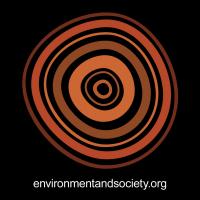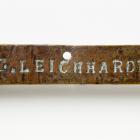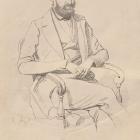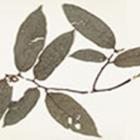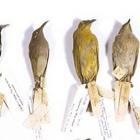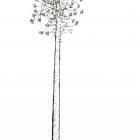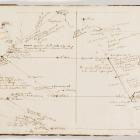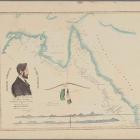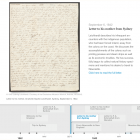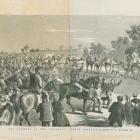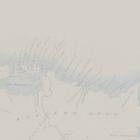Botanical collection in Europe and Australia
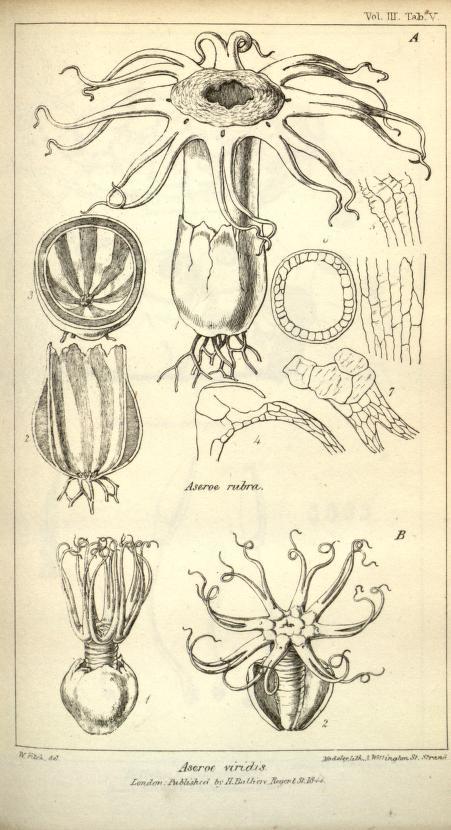
lllustration of the fungus Aseroe rubra based on a drawing by Ludwig Leichhardt.
lllustration of the fungus Aseroe rubra based on a drawing by Ludwig Leichhardt.
London Journal of Botany, edited by William Hooker (1785–1865), Vol. III (1844), Tab. V. WWW, Biodiversity Heritage Library.
 This work is licensed under a Creative Commons Public Domain Mark 1.0 License.
This work is licensed under a Creative Commons Public Domain Mark 1.0 License.
The collections of the botanical garden in Berlin contain this fig tree specimen prepared by Ludwig Leichhardt. The species Ficus stephanocarpa was described for the first time in 1905 by the botanist Otto Warburg. Warburg based his description on a sample that he had gathered during a trip to Australia, but it is likely that he also referred to Leichhardt’s specimen when he was working with the collections in Berlin. “An endless, indomitable drive compels me to study this natural environment and to solve this country’s mysteries,” declared Leichhardt in one of his letters from Australia (letter to F. A. Schmalfuß, 20 October 1847). He had prepared for his career as a naturalist at the most prestigious scientific establishments in London and Paris. Natural history practices of the time put particular emphasis on extensive collection of animal and plant species in order to discover the natural order that connected all living things. Leichhardt’s letters offer insight into his place in the scientific networks among which large numbers of specimens circulated during the first half of the nineteenth century. Preserved specimens were substituted for their living counterparts, allowing them to be transported, examined, described, compared, and consulted repeatedly—as in the case of the Australian fig tree, which Warburg declared to be a new species, probably using Leichhardt’s specimen as a reference, 60 years after it had been collected.
When Leichhardt arrived in Sydney in 1842, he had in his baggage a handbook from the Muséum National d’Histoire Naturelle in Paris, which contained instructions on how to properly prepare specimens. In the Royal Botanic Gardens in Kew he had familiarized himself with the plants of Australia and made contact with its influential director, William Hooker, although he did not manage to secure a commission to collect plants for the institute. In Sydney Leichhardt found a scientific network that was still in its infancy, dependent upon the enthusiasm of local amateurs and imperial initiatives and suffering from the economic recession. Neither the Australian Museum, founded in 1827, nor the botanical garden, established in 1816, were very constructive in Leichhardt’s opinion, and he tried in vain to get a position, as he reports in a letter to his mother (6 September 1842). He began to create his own botanical collection and wrote to William Hooker for literature to aid him in classifying his finds; he included a drawing of a fungus in his letter. Although Leichhardt never received a response, Hooker identified the fungus and had the drawing published along with Leichhardt’s description. Leichhardt never learned of this publication—a vivid example of the difficulties in taking part in scientific discussions from the colonial periphery. Leichhardt sent no more specimens to Kew, but delivered his collections to Berlin and Paris instead.
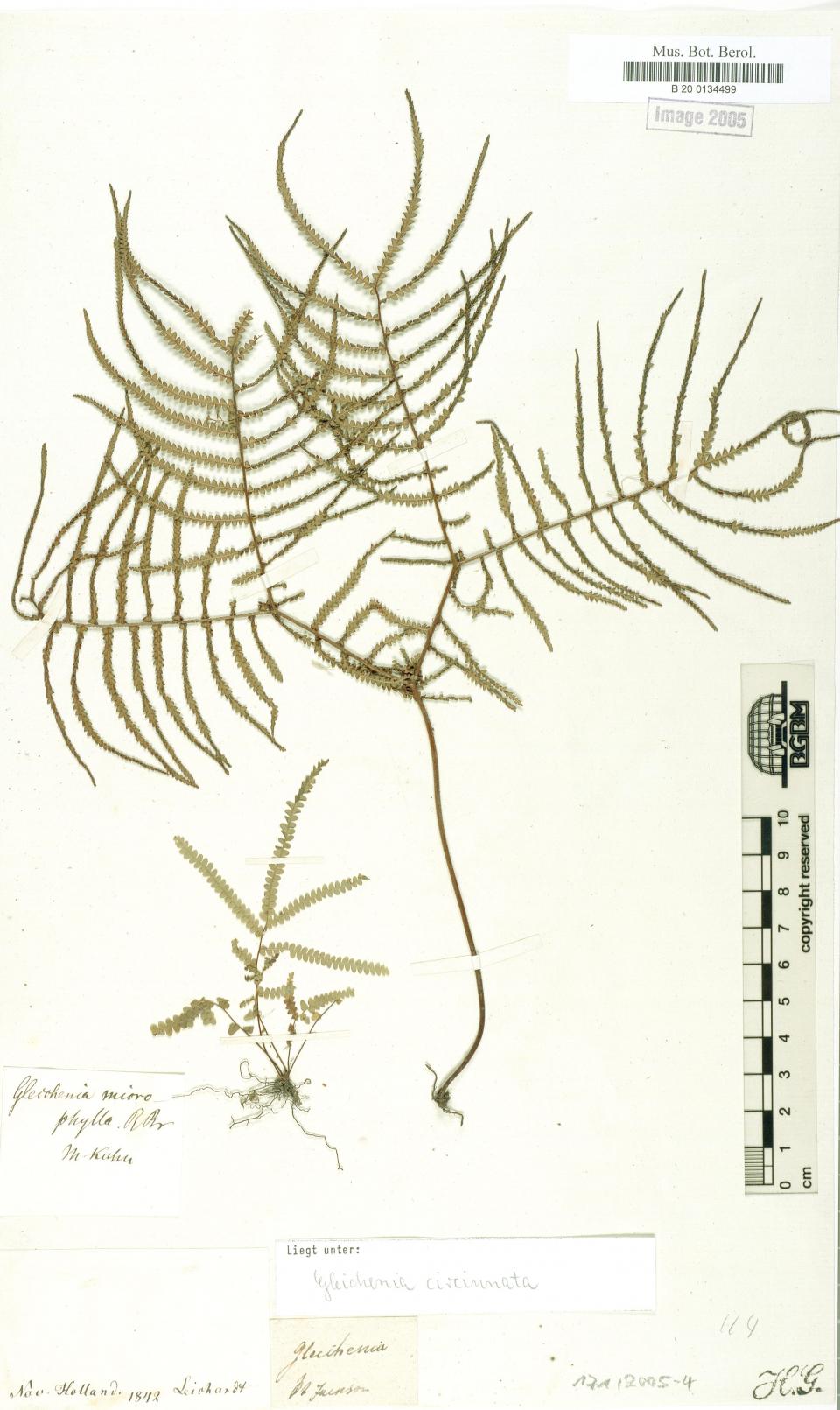
Specimen of Gleichenia circinata, collected by Ludwig Leichhardt in the British colony of New South Wales, 1842
Specimen of Gleichenia circinata, collected by Ludwig Leichhardt in the British colony of New South Wales, 1842
Courtesy of Botanischer Garten und Botanisches Museum Berlin-Dahlem.
View image source.
 Dieses Werk ist lizenziert unter einer Creative Commons Namensnennung - Weitergabe unter gleichen Bedingungen 3.0 Deutschland Lizenz.
Dieses Werk ist lizenziert unter einer Creative Commons Namensnennung - Weitergabe unter gleichen Bedingungen 3.0 Deutschland Lizenz.
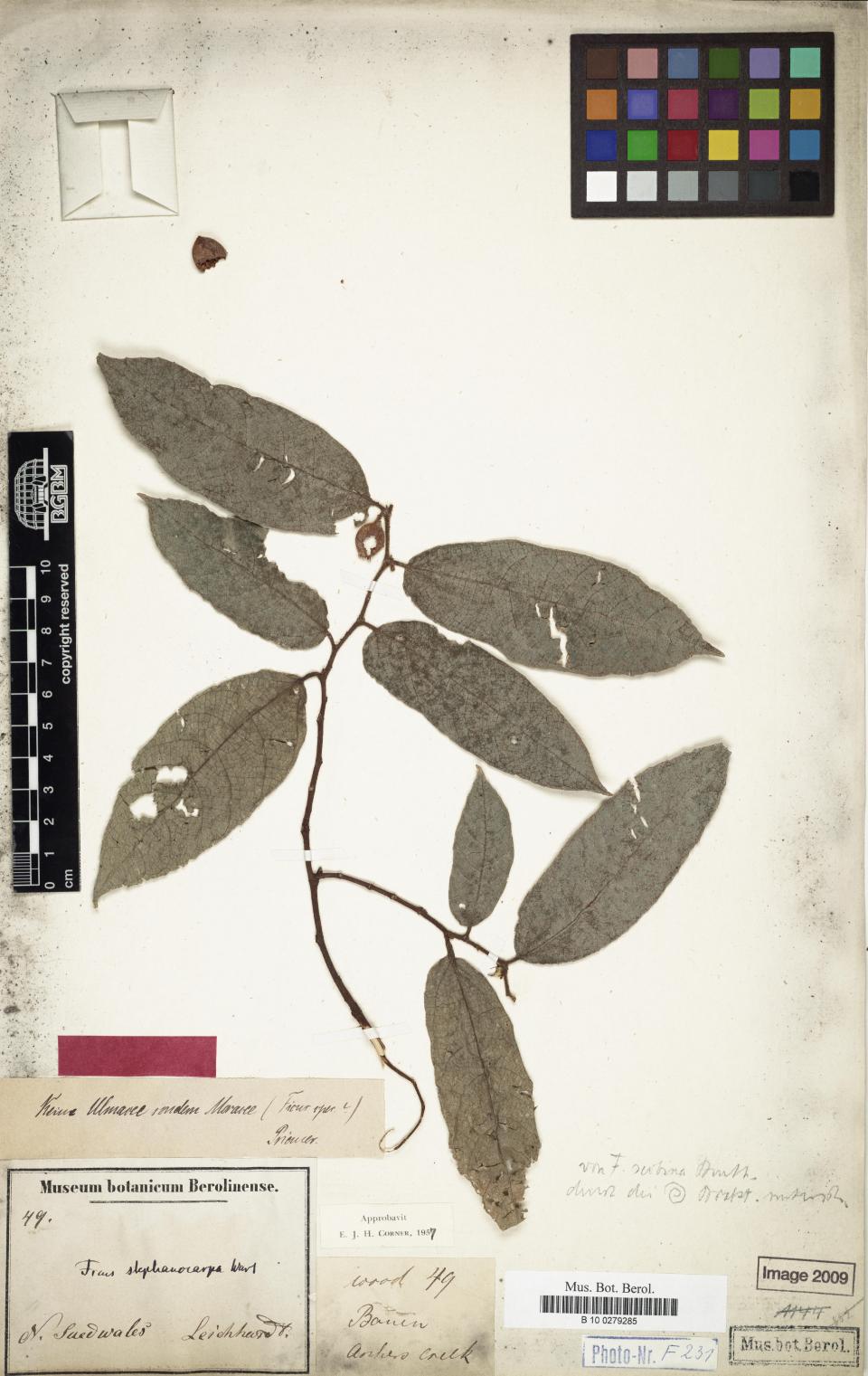
Specimen of an Australian fig tree, Ficus stephanocarpa, collected by Ludwig Leichhardt the British colony of New South Wales, 1842.
Specimen of an Australian fig tree, Ficus stephanocarpa, collected by Ludwig Leichhardt the British colony of New South Wales, 1842.
Röpert D. (ed.) 2000+ [continuously updated]: Digital specimen images at the Herbarium Berolinense.
View image source.
Courtesy of the Botanischer Garten / Botanisches Museum Berlin.
 Dieses Werk ist lizenziert unter einer Creative Commons Namensnennung - Weitergabe unter gleichen Bedingungen 3.0 Deutschland Lizenz.
Dieses Werk ist lizenziert unter einer Creative Commons Namensnennung - Weitergabe unter gleichen Bedingungen 3.0 Deutschland Lizenz.
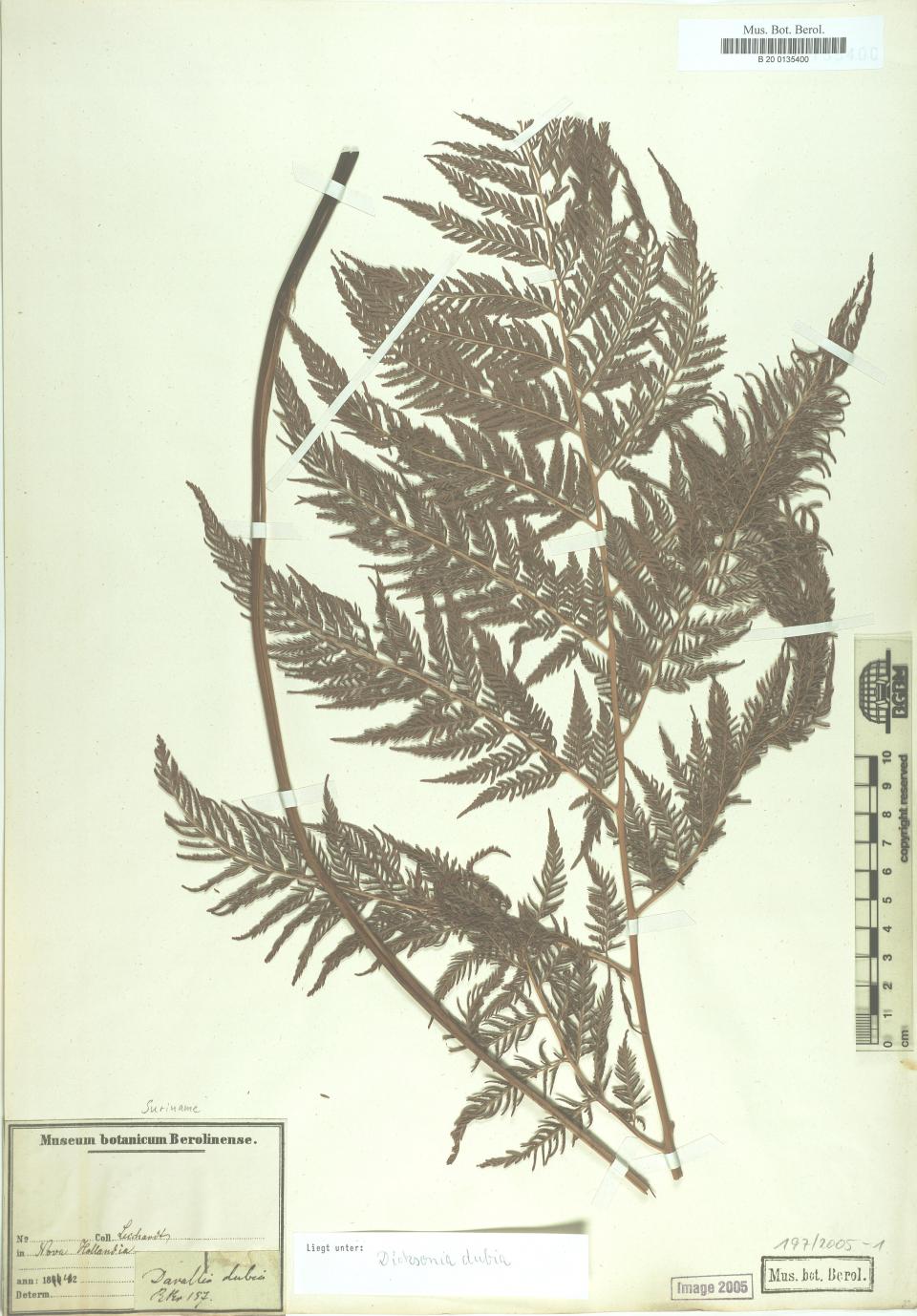
Specimen of Dicksonia dubia, collected by Leichhardt in New South Wales, 1842
Specimen of Dicksonia dubia, collected by Leichhardt in New South Wales, 1842
Röpert, D. (ed.) 2000– (continuously updated): Digital specimen images at the Herbarium Berolinense.
View image source.
Courtesy of Botanischer Garten und Botanisches Museum Berlin-Dahlem.
 Dieses Werk ist lizenziert unter einer Creative Commons Namensnennung - Weitergabe unter gleichen Bedingungen 3.0 Deutschland Lizenz.
Dieses Werk ist lizenziert unter einer Creative Commons Namensnennung - Weitergabe unter gleichen Bedingungen 3.0 Deutschland Lizenz.
From September 1842 to April 1844 Leichhardt traveled through the colony of New South Wales, armed with only the most basic equipment, and gathered botanical and geological specimens, as he wrote to his mother: “Think of a young peasant in jacket and pants on a small black horse, a woolen blanket and satchel strapped across his saddle, a heavy hammer on the saddle horn and a smaller one in his pocket, and you will have fairly accurate vision of your dear son as he rides across the forest of Australia… . If the region is notable, I pause, give my horse a rest, and wander about the area in order to look about and collect whatever seems interesting to me” (letter to his mother, 27 June 1843). In order to preserve his botanical specimens, he begged paper from farmers and missionaries. He relied upon his memory to identify them, and gave descriptive names to unknown species in order to distinguish between them (Darragh 2007). He collected a large number of different species of wood for the natural history museum in Paris; after he returned to Sydney, an additional package went to the botanical gardens in Berlin.
On the Port Essington Expedition the collection of specimens formed a routine part of the everyday activities of Leichhardt and his companions. As the provisions were used up, specimens took their place in the baggage. For protection, Leichhardt wrapped them in packets of rawhide. Shortly before reaching their destination, the party lost several pack animals, and Leichhardt had to abandon his collections: “This forced me to throw away my beautiful botanical and geological collections almost entirely. I burned about 3000 dried plants—the Berlin Museum may join in my lamentations because I had intended to send a part of my collection to Berlin” (letter to F. A. Schmalfuß, 24 January 1846).
The possibility of discovering new species during an expedition through unexplored territory was not Leichhardt’s only scientific motivation for his overland expedition. The time span and distance of his journeys also offered an opportunity to collect plants in various stages of their life cycle—from blossoms to fruit and seeds—and to observe “the gradual changes in flora and fauna from one coast to the other” (letter to F. A. Schmalfuß, 6 December 1846). Leichhardt expressed the hope that “even if my dried plants should not be suitable for determining new species, they should nevertheless prove interesting and useful for the botanical geography of New Holland” (last letter to F. A. Schmalfuß, 22 February 1848). This interest in the influence of geography and related factors on plant life was inspired by Alexander von Humboldt’s study of the geography of plants. Humboldt was his scientific role model, as he confessed in one of his letters: “And Humboldt? His example will always serve as my guiding principle” (letter to F. A. Schmalfuß, 21 October 1847).
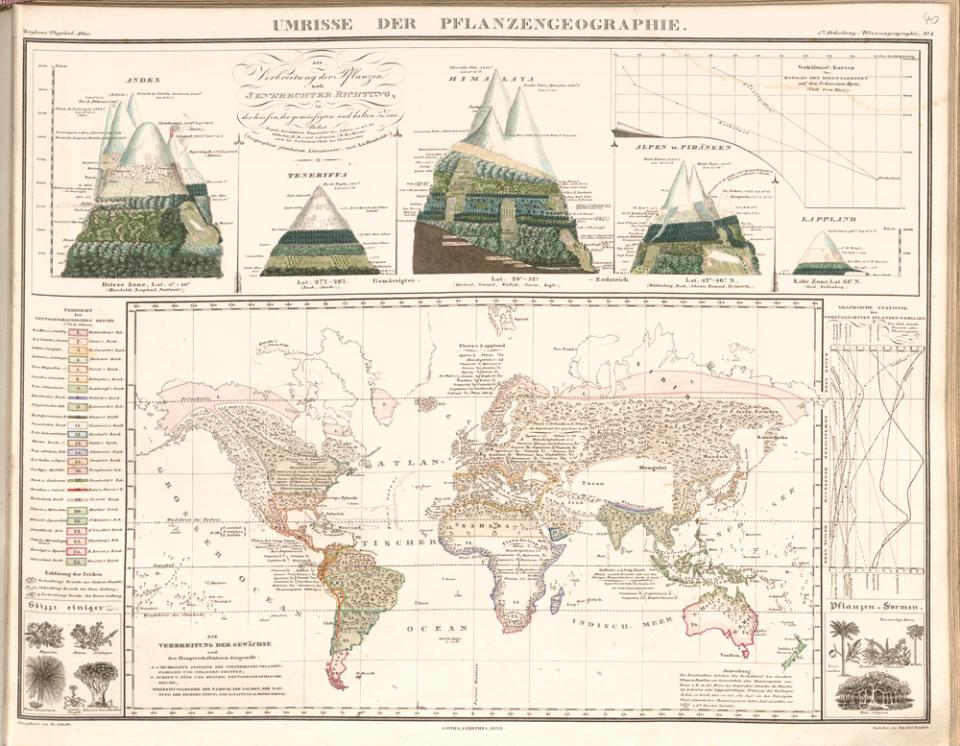
Umrisse der Pflanzengeographie, an outline of Plant Geography. (Illustration by Friedrich Schelle. CC BY-NC-SA 4.0. Courtesy of Bayerische Staatsbibliothek München.)
Umrisse der Pflanzengeographie, an outline of Plant Geography. (Illustration by Friedrich Schelle. CC BY-NC-SA 4.0. Courtesy of Bayerische Staatsbibliothek München.)
CC BY-NC-SA 4.0. Courtesy of Bayerische Staatsbibliothek München. Signatur: Hbks/E 34 o-
3. View image source.
 This work is licensed under a Creative Commons Attribution-NonCommercial-ShareAlike 4.0 International License.
This work is licensed under a Creative Commons Attribution-NonCommercial-ShareAlike 4.0 International License.
Although Leichhardt’s travels kept him from his desk, he increasingly felt the need to create the necessary conditions for taxonomic work within the Australian colony, not just abroad: “I do require a safe place for my ever-increasing collections, where they will not only be sheltered from insects and the elements, but also easily accessible for whenever I have time to study them” (letter to F. A. Schmalfuß, 20 October 1847; letter to F. A. Schmalfuß, 19 August 1846). His desire to only send duplicate specimens to Europe is remarkable, for it challenged the dominant position of the European natural history museums and the subordinate role of their overseas assistants—mostly working in the colonies—as mere suppliers of material. Leichhardt’s transnational background also played a role here; he was annoyed that his Prussian homeland, instead of “taking advantage of what its native son can offer from abroad, enriching its museums and collections and gathering knowledge about far-off lands” (letter to A. L. Hilgenfeld, 15 May 1844) considered him a deserter for not completing his military service. Thus it seems plausible that Leichhardt wished to help establish local collections in the Australian colonies.
After Leichhardt’s disappearance in 1848, his specimens have survived in various botanical collections in both Australia and Europe. His letters reveal the attitudes of a trained naturalist towards his work and offer insight into the beginnings of natural history museums in the Australian colonies under the shadow of the powerful European institutions.


